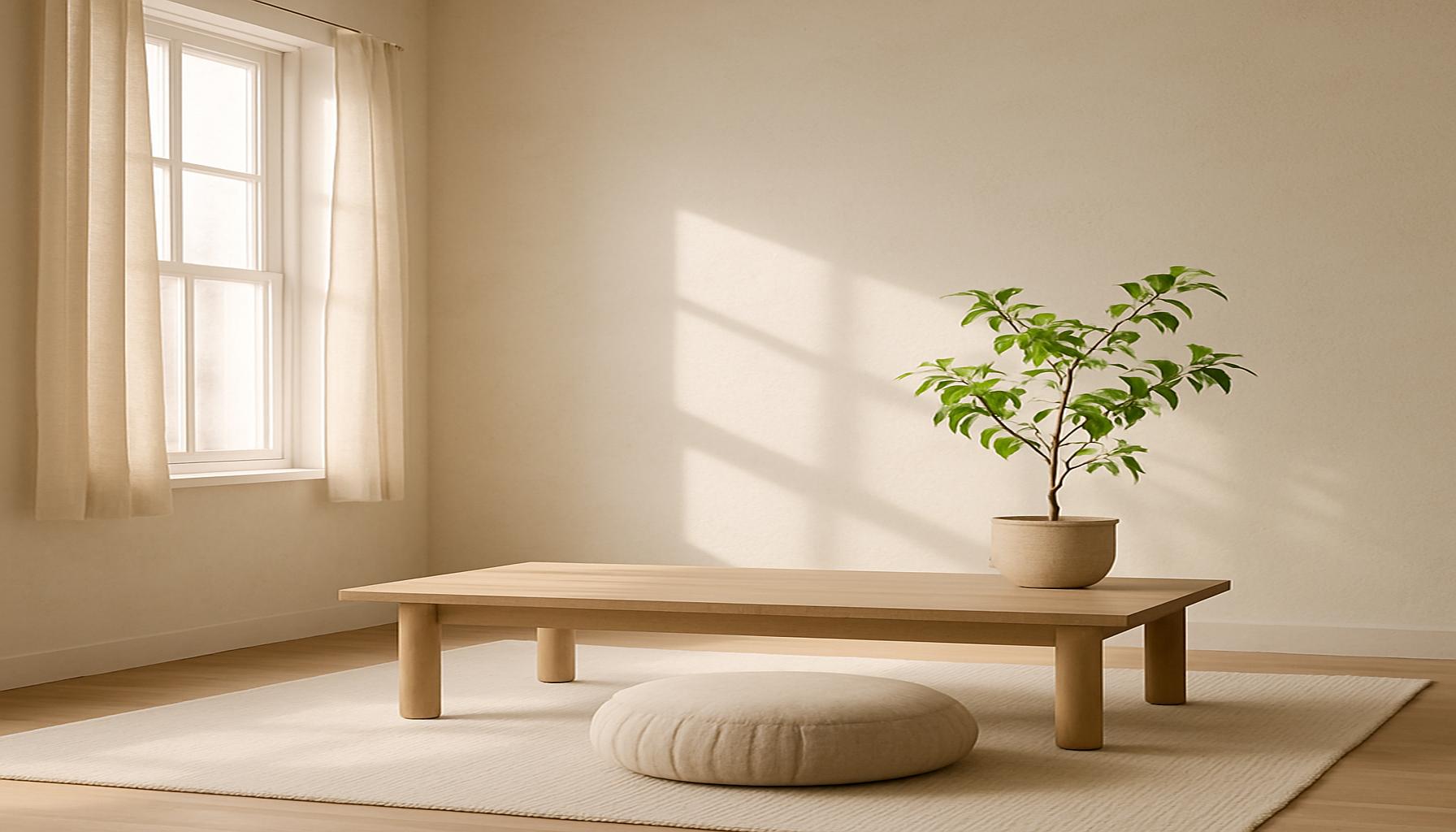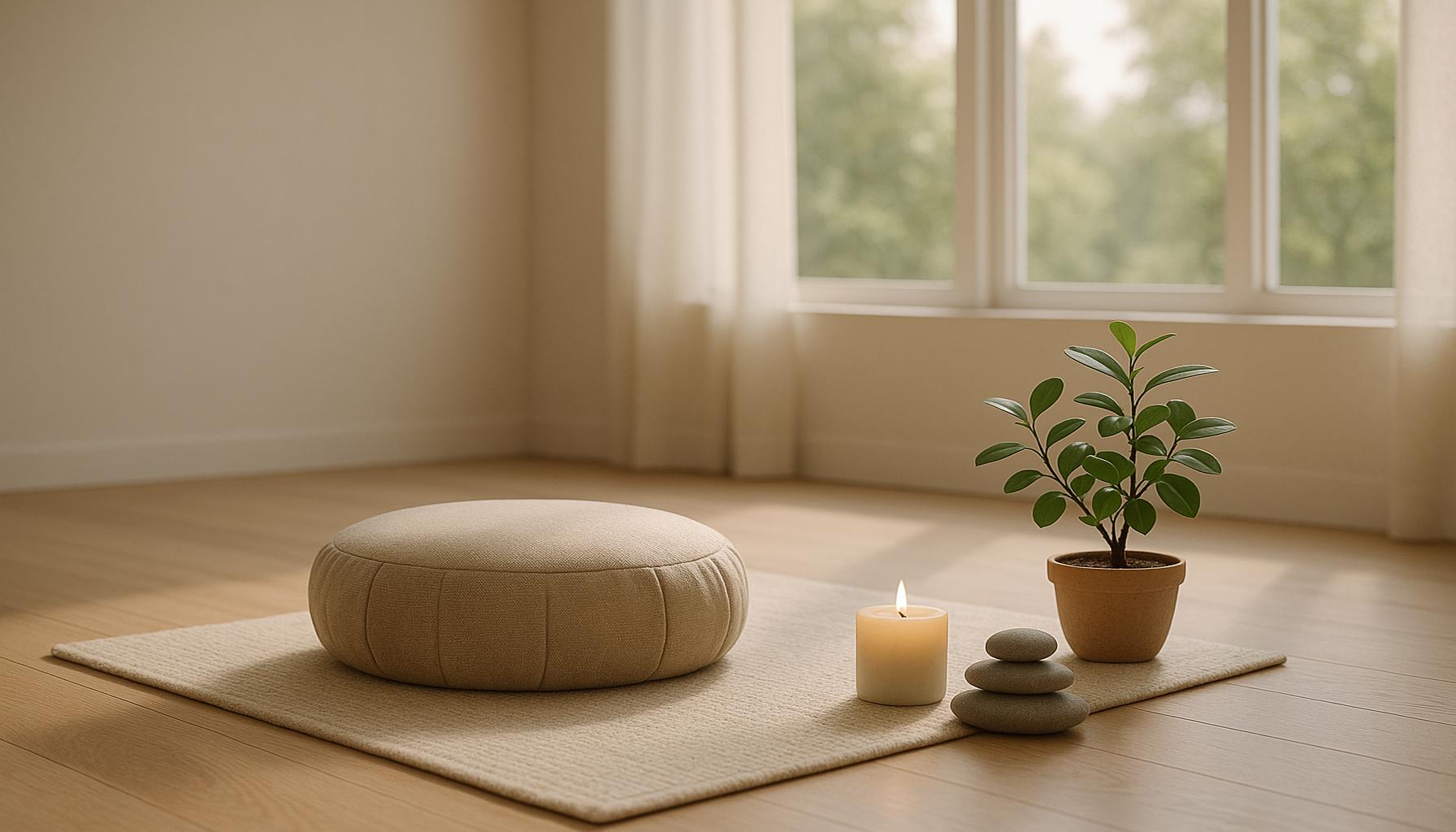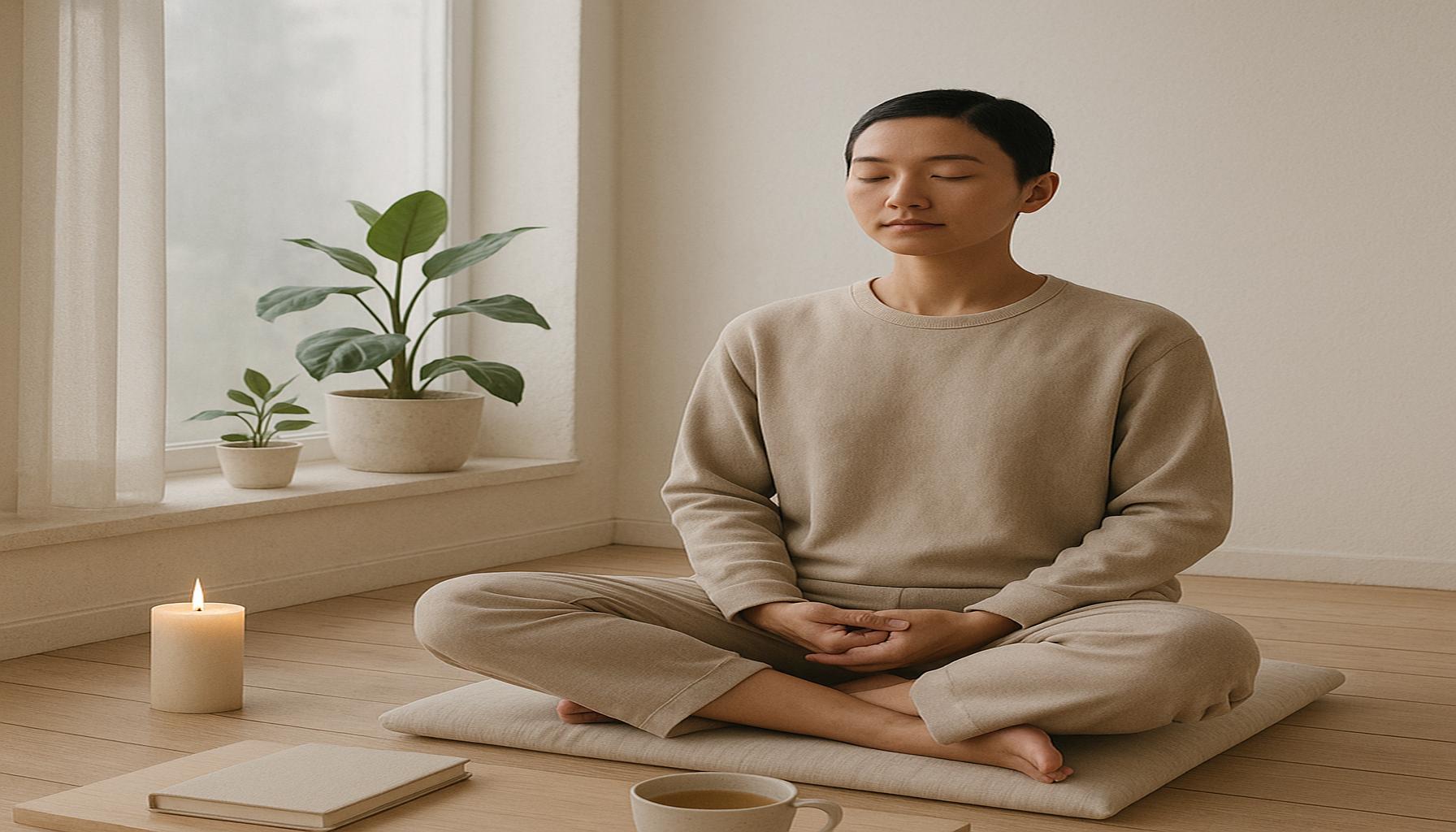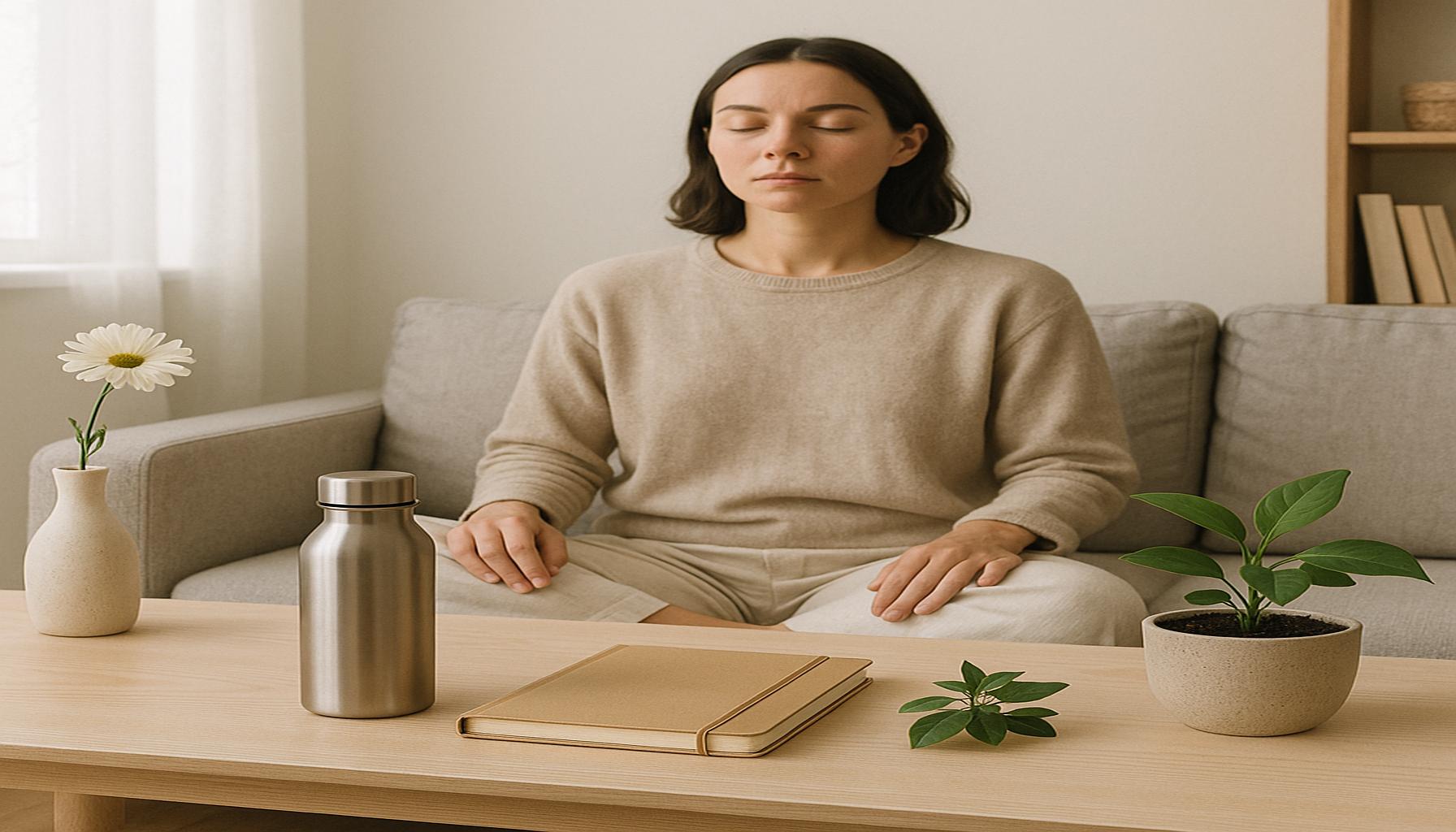Mindfulness and the Importance of Intention in Creating Minimalist Spaces

Understanding the Foundations of Minimalism
In recent years, the idea of embracing a clutter-free lifestyle has evolved into a significant movement focused on mindfulness and intentional living. As individuals strive to simplify their lives, intention becomes a vital component of this journey. It’s about more than just decluttering; it’s about creating a home that mirrors one’s core values and deepest aspirations, promoting mental clarity amidst life’s chaos.
The Benefits of Minimalist Spaces
Minimalist environments are designed to serve as sanctuaries that foster tranquility and focus. By minimizing distractions, these spaces encourage deeper concentration and a sense of peace that many find hard to achieve in today’s fast-paced world. For example, a well-organized workspace with only essential tools can boost productivity and creativity, helping individuals to perform at their best without the chaos that often hinders progress.
Essential Elements of a Mindful Minimalist Environment
When creating a minimalist space, several key elements should be considered to ensure that the environment promotes serenity and mindfulness:
- Purposeful Choices: Each item in your home should have a clear purpose or bring joy. This concept is famously illustrated by Marie Kondo’s philosophy of only keeping items that “spark joy.” By regularly evaluating possessions, individuals can curate a living space that genuinely reflects their interests and needs.
- Natural Materials: Incorporating elements like wood, stone, and plants not only enhances aesthetics but also connects individuals with nature. For instance, a wooden dining table crafted from reclaimed wood tells a story while providing warmth, making meals more inviting and nourishing.
- Neutral Color Palette: A calming color scheme, featuring soft beiges, whites, and pastels, can significantly enhance relaxation. Such colors help to create an atmosphere that soothes the mind, making it easier to unwind. Consider a bedroom painted in soft grey with light blue accents to promote tranquility and restful sleep.
As we navigate through a world filled with constant noise and distractions, practicing mindfulness through intentional design can lead to profound improvements in mental well-being. This approach encourages individuals to curate their environments to reflect their values, ultimately fostering a deeper connection with oneself and one’s living space.
The Impact of Intention on Design
Exploring the importance of intention when crafting minimalist spaces reveals crucial insights about how our environments shape our thoughts and emotions. The concept of intentional living is not merely about aesthetics or decoration; it’s about creating a holistic experience that aligns with personal beliefs and lifestyle. Research indicates that people who engage with their spaces thoughtfully tend to experience increased satisfaction and fulfillment in their daily lives.
By understanding this intricate relationship, one can transform any living area into a personal retreat that inspires peace and creativity. Therefore, whether one is redesigning a small apartment in New York City or a suburban home in Texas, the principles of minimalism can help cultivate an environment that nurtures both mental and emotional health, leading to a life that feels not just simpler, but profoundly richer.
DISCOVER MORE: Click here to dive deeper
The Role of Intention in Creating Mindful Environments
Intention is the backbone of mindfulness, acting as a guiding principle that shapes how we design our living spaces. In the context of minimalist spaces, intention transcends mere aesthetics and establishes a framework for thoughtful living. The process of creating spaces without clutter is deeply intertwined with being conscious of what we allow into our lives. Each decision becomes a reflection of our desires and values, ultimately enhancing our overall well-being.
How Intention Enhances Mindfulness
The act of designing a minimalist space intentionally can lead to a heightened awareness of the environment and its impact on our emotions and behaviors. Research shows that spaces filled with clutter can significantly increase stress and anxiety, while well-curated settings devoid of excess promote calmness and focus. This concept is not just philosophical; it has practical implications for shaping daily experiences.
Consider a few essential ways in which intention can manifest in your living space:
- Mindful Arrangements: Positioning furniture and decor in a way that facilitates flow and function can transform the energy of a room. For instance, orienting seating arrangements to foster conversation or relaxation encourages social interactions, which enhance both mental health and community.
- Symbolic Decor: Incorporating items that hold personal significance can deepen a connection to the space. Whether it’s a piece of art from a loved one or a handcrafted item from a meaningful trip, these elements serve as constant reminders of joy and purpose.
- Regular Reflection: Taking the time to assess how our surroundings affect our mood is critical. Engaging regularly in mindfulness practices, such as meditation or journaling about our environment, can lead to conscious updates that keep our spaces aligned with our evolving values.
The pursuit of mindful minimalism not only involves creating spaces that are free from distractions but also engaging with them in a meaningful way. By recognizing the importance of intention in this process, individuals can craft environments that are not only visually appealing but are also rich in purpose and significance.
Fostering a Sense of Belonging
One of the significant aspects of a minimalist approach fueled by intention is the ability to foster a genuine sense of belonging and comfort. As the trend towards remote work and digital living increases, the home becomes an even more crucial sanctuary. Spaces designed with intention can create a personal refuge that resonates with individuality, making each corner feel welcoming and special.
This connection extends beyond one’s home environment, influencing relationships and community experiences. By curating spaces that reflect heartfelt values, individuals can draw like-minded people into their lives, creating a sense of camaraderie and shared purpose.
In essence, mindfulness through intentional living within minimalist spaces is not just about what we eliminate; it’s about what we choose to embrace. This powerful combination can lead to a transformed perspective on both our external environments and inner worlds, enhancing our journey to holistic well-being.
| Advantage | Impact on Minimalism |
|---|---|
| Enhanced Focus | Mindfulness promotes a clear mental state, enabling individuals to prioritize essential elements in their environment. |
| Intention Setting | By focusing on intentions, individuals create spaces that reflect their personal values, fostering a sense of peace and belonging. |
| Simplified Living | Minimizing distractions leads to a more tranquil lifestyle, which enhances overall well-being. |
| Connection with Surroundings | Emphasizing intentionality helps foster a deeper relationship with one’s environment and promotes environmental mindfulness. |
In exploring the intersection of mindfulness and minimalist spaces, it becomes clear that the deliberate focus on intention significantly shapes how individuals curate their environments. By embracing the concept of mindfulness, individuals can enhance their ability to concentrate on what truly matters, ultimately guiding their choices in home decor and organization.When setting intentions before organizing a space, one can achieve clarity in decision-making surrounding possessions and design elements. This mindful approach contributes to a lifestyle that cultivates simplicity, where distractions are minimized. As a result, individuals often experience not only a reduction in physical clutter but also a profound sense of mental peace, central to the philosophy of minimalist living. Moreover, the practice of being present allows a greater connection with one’s surroundings, forging a relationship that is grounded in appreciation rather than accumulation. This nuanced understanding of intention acts as a compass for creating spaces that resonate with personal values and aspirations.
DIVE DEEPER: Click here to enhance your space efficiency
Intention-Driven Choices: Elevating Your Space
As we delve deeper into the concept of mindfulness in creating minimalist spaces, it becomes essential to recognize that intention-driven choices manifest not only in the arrangement of objects but also in the selection of materials, colors, and lighting. Each element of a room can have profound implications on our emotional state and overall experience of the space. By using intention as a compass, individuals can create environments that are not only serene but also invigorating and inspiring.
Color Psychology and Mood
The colors we choose for our minimalist spaces can significantly affect our mood and productivity. Research in the field of color psychology reveals that certain shades can evoke specific feelings. For instance, tranquil blues and greens often promote calmness and relaxation, ideal for bedrooms or meditation corners. On the other hand, vibrant yellows and oranges can stimulate creativity and energy, making them suitable for workspaces or art areas.
When selecting colors, it’s important to consider how they resonate with your personal intentions. Create a color palette that reflects your intended atmosphere, leading to a cohesive and mindful environment that nurtures your emotional well-being. Beyond just the walls, attention to furniture and decor choice in terms of color can further enhance the desired ambiance.
The Impact of Natural Light
Another critical factor in fostering a minimalist space through intention is the use of natural light. Sunlight can not only illuminate our surroundings but also elevate our mood and enhance our well-being. Spaces that maximize natural light tend to feel more open and inviting, making them conducive to mindfulness practices.
Consider implementing large windows, glass doors, or reflective surfaces to allow light to permeate your space. Additionally, incorporating window treatments that can be easily adjusted enables one to control light levels according to the time of day or mood. Mindfully managing light in this way not only emboldens the importance of intention in your space but also invites the natural world inside, creating a blend of indoor and outdoor living that many find rejuvenating.
Intentional Decluttering: A Continuous Process
While initial efforts to create a minimalist space often focus on decluttering, maintaining that environment is an ongoing journey. Mindfulness encourages a continuous assessment of belongings and reaffirmation of intent. Regularly revisiting personal values and aspirations can guide in letting go of items that no longer align with those beliefs, ensuring that your space remains a reflection of your true self.
Consider setting designated times throughout the year for a personal inventory of your belongings. This might include seasonal changes or moments of reflection, like the new year or birthdays, to evaluate if your possessions still serve a purpose in your life. By doing so, you elevate our spaces from mere physical locales to environments that actively engage with and nurture your essence.
Creating Multifunctional Spaces
One of the hallmarks of intentional minimalist design is multifunctionality. In many American homes, rooms serve various purposes— a dining table that doubles as a workspace, or a guest room that transforms into a cozy reading nook. By designing spaces with flexibility in mind, we not only optimize their use but also cultivate an atmosphere of dynamism, inviting exploration and creativity.
Integrating furniture that can be easily rearranged or repurposed allows individuals to adapt their environments to suit changing needs. This adaptability can enhance mindfulness by encouraging individuals to engage actively with their surroundings, taking ownership of their space and ensuring it reflects shifting intentions.
By intentionally crafting minimalist spaces that embrace color, light, flexibility, and mindful ownership, individuals can cultivate environments that align with their core values, further enhancing their overall sense of tranquility and purpose.
EXPLORE MORE: Click here to discover mindfulness techniques for better organization</
The Essence of Mindfulness in Minimalist Living
In conclusion, the journey towards cultivating a minimalist space steeped in mindfulness is not merely about creating a visually appealing environment but about nurturing a holistic sense of well-being and purpose. By placing intention at the forefront of our design choices—whether it be through color, light, multifunctionality, or intentional decluttering—we create spaces that resonate deeply with our personal values and emotional needs. Each thoughtful element can inspire transformations in our emotional states, motivating us toward tranquility and creativity.
As we engage in the ongoing process of refining our spaces, it’s essential to remember that mindfulness is not confined to a one-time event; it’s a continuous practice of reflection and adaptation. Consistently assessing our belongings and their alignment with our intentions helps maintain a harmonious environment that mirrors our lives. Moreover, harnessing the impact of natural elements, such as light and color, magnifies our experiences in these spaces, ultimately shaping how we connect with ourselves and the world around us.
For those embarking on this minimalist journey, remember that each choice you make influences your daily life. Embrace the process with openness and curiosity, and allow your environment to echo your inner philosophies. In doing so, you not only enhance your living space but also cultivate a mindful existence that confidently reflects who you truly are. As we move forward, may the intention behind our choices lead us to more serene, inspiring, and authentically minimal spaces.


